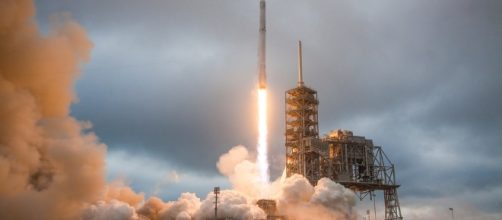While Americans remain frightened about the Korean missile crisis and angry over Charlottesville, some good news happened at the Kennedy Space Center. A SpaceX Falcon 9 lifted off, carrying a Dragon supply ship to the international space station. Minutes later the first stage of the rocket landed without a fuss near the launch pad, Elon Musk’s space launch company is taking rocket science, a synonym for something hard, and making it look easy. The launch was the 11th Falcon 9 flight this year and the 12 resupply flight to the ISS mounted by SpaceX.
The Dragon is taking a super computer to the ISS
Astronauts have been using computers in space for decades, from the rudimentary devices that calculated trajectories in the Apollo spacecraft to the more sophisticated models being used currently for the International Space Station currently. The Dragon is taking a “Super Computer” to the ISS that was designed and built by Hewitt Packard. Unlike the computers on the space station, which tend to be for specific tasks such as navigation, the HP super computer is a general purpose model for crunching numbers for experiments. The model is a prototype for computers that would be used on deep space missions, say to Mars, where communication with Earth based computers would take too long to be useful.
Other cargo headed for the space station includes ice cream
Among with the 6,400 pounds of supplies headed for the ISS is a store of Ice Cream, vanilla, chocolate, and wedding cake flavor, as well as ice cream bars, stored in freezers that will eventually return filled with the result of experiments. The confection is a far cry from the so-called astronaut ice cream that was freeze dried and tasted pretty awful.
Besides actual ice cream, the Dragon is bringing an experiment called the Cosmic Ray Energetics and Mass (CREAM) experiment. The “ISS Cream” consists of a balloon that measures cosmic rays in space. 20 mice to be used in life science experiments are also headed to the ISS.
SpaceX refining reusability for the Falcon 9
SpaceX has managed to land 14 of its first stage rockets and has reflown two of them.
The company has also reflown one of the Dragon cargo ships. The plan remains to make a large part of the Falcon 9 system reusable, landing first stage boosters, refurbishing them rapidly, and then relaunching them. The idea is to lower the cost of space travel and thus not only undercut SpaceX’s competitors but to make space travel cheap enough to attract more customers. The company has also managed to increase its flight rate, a process that also drives down costs.


